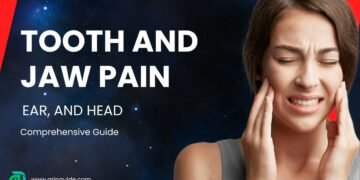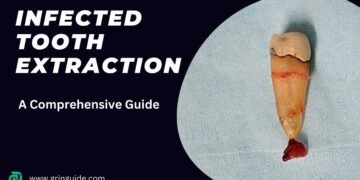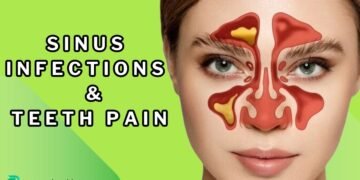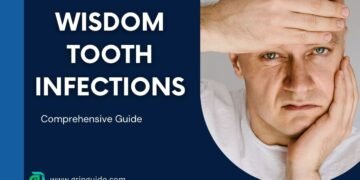Table of Contents
What are Interdental Brushes?
Interdental brushes are small, specially designed brushes intended to clean the spaces between your teeth that a regular toothbrush cannot reach. These brushes have a slender, flexible wire core with bristles that come in various sizes to accommodate different interdental gaps. Their design allows for easy insertion between teeth, effectively removing food particles and plaque buildup.
The increasing popularity of interdental brushes can be attributed to their ease of use and effectiveness. Unlike traditional flossing, which requires a specific technique to be effective, using an interdental brush is relatively straightforward. Users simply insert the brush between their teeth and move it back and forth to clean the interdental spaces. This simplicity makes it an appealing option for people of all ages, including those with limited dexterity.
Moreover, interdental brushes are particularly beneficial for individuals with orthodontic appliances, bridges, or implants, where traditional flossing might be challenging or less effective. Their design allows for a more thorough cleaning around these dental devices, promoting better oral hygiene.
As dental professionals continue to emphasize the importance of maintaining healthy gums and preventing periodontal diseases, interdental brushes have gained recognition as a valuable tool in oral care routines. They offer a practical and efficient alternative to flossing, helping individuals achieve optimal oral health with minimal effort.
Overall, the growing adoption of interdental brushes underscores their significance in contemporary oral hygiene practices. Whether as a supplement to flossing or as a standalone cleaning method, these brushes provide an accessible and effective solution for maintaining clean and healthy interdental spaces.

Different Types and Sizes
Interdental brushes come in various sizes and shapes to accommodate different tooth spaces. From small to large gaps, there’s an interdental brush for everyone.
These brushes consist of a small, thin handle with bristles attached at one end. The bristles are usually made of nylon or other soft materials. The handle allows you to hold and maneuver the brush comfortably.
Benefits
- Effective Plaque Removal:
- Interdental brushes can reach areas that regular toothbrushes and floss might miss.
- They clean between teeth and along the gumline, removing food particles, plaque, and debris.
- Gum Health:
- Regular use of interdental brushes helps prevent gum disease (gingivitis and periodontitis).
- By keeping interdental spaces clean, you reduce the risk of gum inflammation and bleeding.
- Prevents Bad Breath:
- Food particles trapped between teeth can contribute to bad breath.
- Interdental brushes help remove these particles, promoting fresher breath.
- Ideal for Dental Restorations and Orthodontic Appliances:
- If you have dental implants, bridges, braces, or other dental restorations, interdental brushes are especially useful.
- They clean around these appliances effectively.
- Convenient and Portable:
- Interdental brushes are compact and easy to carry.
- You can use them on the go, making it convenient to maintain oral hygiene throughout the day.
- Customizable Sizes:
- Interdental brushes come in various sizes (diameters).
- Choose the right size to fit your specific interdental spaces.
Effectiveness: Interdental Brushes vs. Flossing
When it comes to oral hygiene, the debate between using interdental brushes and traditional flossing is ongoing. Both methods aim to remove plaque and food particles from areas that a regular toothbrush cannot reach, but how do they compare in terms of effectiveness?
Several studies have examined the efficacy of interdental brushes versus flossing. Research published in the Journal of Clinical Periodontology indicates that interdental brushes are highly effective at removing plaque and reducing gingival bleeding. These brushes, designed to fit between the teeth, offer a more comprehensive cleaning experience, particularly for individuals with larger interdental spaces. Conversely, traditional flossing is more effective for those with tight spaces between their teeth where interdental brushes may not fit.
Expert opinions also highlight the strengths and limitations of each method. Dental professionals often recommend interdental brushes for patients with orthodontic appliances, dental implants, and bridges, where traditional floss might struggle to clean effectively. On the other hand, dental floss is suggested for individuals with minimal interdental gaps, as it can easily slide between tight spaces to remove plaque.
Interdental brushes have been shown to be more user-friendly for many people, especially those with dexterity issues. The ease of use often results in better compliance and consistent daily use, which is crucial for maintaining oral health. Conversely, while flossing requires a bit more technique and precision, it remains a staple recommendation for comprehensive oral care.
Ultimately, the choice between interdental-brushes and flossing may depend on individual dental conditions and personal preferences. Consulting with a dental professional can provide tailored advice on which method—or a combination of both—would be most effective for maintaining optimal oral hygiene.
How to Use Interdental Brushes Properly

Utilizing interdental brushes efficiently is pivotal for maintaining optimal oral hygiene. When used correctly, these brushes can effectively remove plaque and food particles lodged between teeth, areas where traditional brushing often falls short.
Below, we provide a step-by-step guide to ensure you maximize the benefits of interdental brushes.
Step-by-Step Instructions
1. Select the Right Size Brush: The first and foremost step is choosing the appropriate size of the interdental brush. These brushes come in various sizes, typically indicated by color codes. It is crucial to select a brush that fits snugly into the interdental space without causing discomfort. Using a brush too small may not clean effectively, while a brush too large could damage the gums.
2. Hold the Brush Correctly: For better control, hold the interdental brush between your thumb and forefinger. Ensure that you have a firm yet gentle grip to maneuver the brush easily between your teeth.
3. Insert the Brush Gently: Insert the brush gently into the space between your teeth. Avoid forcing it in as this can damage the gums. If you encounter resistance, try another angle or opt for a smaller brush size.
4. Move the Brush Back and Forth: Once the brush is in place, move it back and forth a few times to dislodge and remove plaque and debris. Be gentle to avoid causing any injury to the gums.
5. Rinse and Repeat: After cleaning one interdental space, rinse the brush under water to remove any debris before moving on to the next space. Repeat this process for all the interdental areas in your mouth.
Additional Tips
To avoid common mistakes, do not use excessive force, as this can lead to gum irritation or damage. If you are unsure about the correct size or technique, consult your dentist or dental hygienist for personalized advice. Regular cleaning with interdental brushes can significantly contribute to your overall oral health, especially when used alongside traditional brushing and flossing.
When considering the effectiveness of interdental-brushes, a common question arises: should toothpaste be used in conjunction with these tools? The use of toothpaste with interdental brushes largely depends on individual dental needs and specific oral health conditions. While some experts advocate for using toothpaste to enhance the cleaning process, others suggest that it may not always be necessary.
Interdental brushes are designed to clean the spaces between teeth, areas that conventional toothbrushes cannot reach. These tools are particularly effective at removing plaque and food particles. Adding toothpaste can potentially augment this cleaning action, especially if the toothpaste contains fluoride, which helps in strengthening tooth enamel and preventing decay. In cases where individuals are at a higher risk of cavities or have been advised by their dentist to use fluoride toothpaste, applying a small amount to the interdental brush can be beneficial.
On the other hand, some dentists argue that toothpaste might not be essential for interdental brushing. The primary function of interdental brushes is mechanical plaque removal, and this can be effectively achieved without the addition of toothpaste. Furthermore, toothpaste can sometimes create a slippery surface, making it difficult to maneuver the brush between tight spaces. For individuals with sensitive gums or those prone to gum irritation, it might be advisable to use interdental brushes without toothpaste initially, gradually introducing it based on comfort and necessity.
Expert recommendations often emphasize the importance of personalizing oral hygiene routines. Dentists generally recommend starting with a dry interdental brush to assess comfort and effectiveness. If additional cleaning power is required, a small amount of toothpaste can be introduced. It is also advisable to consult with a dental professional to determine the most suitable approach based on individual oral health needs.
In conclusion, the use of toothpaste with interdental brushes can be advantageous in certain situations, but it is not universally necessary. Tailoring the approach based on professional advice and personal comfort will ensure optimal oral hygiene and health.
Interdental brushes have become a staple in many oral hygiene routines, often praised for their ability to clean areas that standard toothbrushes cannot reach. However, a common concern is whether these brushes could potentially enlarge the gaps between teeth. Addressing this concern requires an understanding of both the function and proper usage of interdental brushes.
Firstly, it is important to note that interdental brushes are designed to fit snugly into the spaces between teeth, removing plaque and food debris without causing harm when used correctly. These brushes come in various sizes to accommodate different interdental gaps, ensuring that users can find a suitable fit for their specific dental architecture. The key to preventing any potential widening of gaps is to select the appropriate size and use gentle, controlled movements.
Research and dental expert opinions suggest that when used properly, interdental brushes do not cause gaps between teeth to widen. In fact, they promote healthier gums and reduce inflammation, which can actually help maintain the integrity of the spaces between teeth. Any perceived widening is often due to the removal of plaque and reduction of swelling in inflamed gums, which might initially give the impression of increased spacing.
Improper use, such as using a brush that is too large or applying excessive force, can, however, lead to gum irritation or damage. This underscores the importance of choosing the right size brush and consulting with a dental professional if unsure about proper usage. Regular dental check-ups can also ensure that interdental brushes are being used effectively and safely.
In conclusion, interdental brushes, when used correctly, should not enlarge the gaps between teeth. They are a beneficial tool for maintaining oral hygiene and can contribute to healthier gums and cleaner teeth without negatively impacting tooth spacing.
Uses of Interdental Brushes
Interdental brushes are essential tools for maintaining optimal oral hygiene. Their primary function is to clean the spaces between teeth, which are often inaccessible to regular toothbrushes. This makes them particularly beneficial for individuals with braces, bridges, or wide gaps between their teeth. By effectively removing food particles and plaque from these hard-to-reach areas, interdental brushes help prevent cavities and other dental issues.
For individuals with braces, interdental brushes are indispensable. The wires and brackets of braces create numerous nooks and crannies where food can get trapped, leading to plaque buildup. Regular use of interdental brushes can prevent this accumulation and reduce the risk of developing cavities around the orthodontic hardware. Similarly, those with dental bridges can benefit from interdental brushes, as these tools can easily navigate around the bridgework to maintain cleanliness.
Beyond their utility for specific dental appliances, interdental brushes play a significant role in promoting gum health. Using these brushes can help stimulate the gums, improving blood circulation and reducing the risk of gum inflammation. This is particularly important for preventing periodontal diseases, which can lead to severe dental issues if left untreated. By removing plaque and debris from the gum line, interdental brushes contribute to healthier gums and overall oral hygiene.
Another advantage of interdental brushes is their versatility. They come in various sizes, allowing users to choose the appropriate brush for their specific dental needs. This adaptability ensures that even individuals with wide gaps between their teeth can find a suitable brush to maintain oral cleanliness. Regular use of interdental brushes not only keeps teeth and gums healthy but also enhances the effectiveness of other dental care routines, such as flossing and brushing.
Frequency of Use
Interdental brushes are an essential tool for maintaining optimal oral hygiene, but understanding the appropriate frequency of use can be crucial for their effectiveness. Dental professionals generally recommend using interdental brushes at least once a day. This daily use helps to remove plaque and food particles that can accumulate between teeth, reducing the risk of gum disease and tooth decay. The American Dental Association suggests incorporating interdental brushes into your regular oral care routine, alongside traditional brushing and flossing.
However, the frequency of use may vary depending on individual dental health needs. For people with braces, implants, or bridges, more frequent use might be necessary to ensure that all debris is adequately cleared. Those with periodontal disease or other dental conditions may also benefit from using interdental brushes multiple times a day, as advised by their dentist. It is crucial to consult with a dental professional to tailor the frequency of interdental brush use to your specific oral health requirements.
Consistency in using interdental brushes is key. Even if you do not have immediate dental concerns, incorporating these brushes into your daily regimen can serve as a preventive measure. It’s worth noting that while interdental brushes are highly effective, they should complement, not replace, traditional flossing. Using both tools can provide a comprehensive approach to oral care, ensuring that no areas are neglected.
To maximize the benefits of interdental brushes, it is essential to select the appropriate size for your teeth. Using a brush that is too small may be ineffective, while one that is too large could cause discomfort or damage to the gums. Again, seeking advice from a dental professional can help in making the best choice for your specific needs.
Comparing Interdental Brushes with Other Dental Tools

Let’s compare interdental brushes with other common dental tools:
- Interdental Brushes:
- Purpose: Designed to clean between teeth and around dental appliances.
- Advantages:
- Effective at removing food particles and plaque from interdental spaces.
- Ideal for people with gaps between teeth, dental restorations, or orthodontic appliances.
- Portable and convenient for on-the-go use.
- Usage: Insert gently between teeth and move back and forth.
- Sizes: Available in various diameters to fit different gaps.
- Dental Floss:
- Purpose: Used to clean between teeth where brushes can’t reach.
- Advantages:
- Removes debris and plaque from tight spaces.
- Good for overall gum health.
- Usage: Slide floss between teeth and clean along the sides.
- Varieties: Waxed, unwaxed, flavored, and tape floss.
- Toothpicks:
- Purpose: Clean between teeth and massage gums.
- Advantages:
- Convenient for quick cleaning.
- Helps dislodge food particles.
- Types: Wooden toothpicks, plastic picks, and silicone-tipped picks.
- Water Flossers (Oral Irrigators):
- Purpose: Use water pressure to clean between teeth.
- Advantages:
- Effective for removing debris and massaging gums.
- Suitable for people with braces or sensitive gums.
- Usage: Direct the water stream between teeth.
- Dental Sticks (Soft Picks):
- Purpose: Soft rubber or silicone tips for cleaning between teeth.
- Advantages:
- Gentle on gums.
- Reusable and portable.
- Usage: Insert between teeth and move in and out.
Remember that the best tool depends on your individual needs, preferences, and the advice of your dentist or dental hygienist. Regular use of any of these tools contributes to better oral health!
Tips for Getting the Most Out of Interdental Brushes
- Incorporating Interdental Cleaning into Daily Routine: Make interdental cleaning a habit by adding it to your daily oral hygiene routine. Keep your brushes handy so you’re more likely to use them consistently.
- Seeking Professional Advice on Proper Usage: If you’re unsure about using interdental brushes correctly, don’t hesitate to ask your dentist or dental hygienist for guidance. They can provide tips tailored to your specific needs.
- Potential Challenges and How to Overcome Them: Some people may find it challenging to use interdental brushes at first, but with practice and patience, you can overcome any difficulties. Start with the smallest brush size and gradually work your way up as needed.
Conclusion and Recommendations
In evaluating the role of interdental brushes, it is evident that they offer a valuable alternative or supplement to traditional flossing. Both interdental brushes and dental floss serve the primary function of removing plaque and food particles from between teeth, areas that a regular toothbrush often cannot reach. However, interdental brushes have certain advantages, particularly for individuals with wider interdental spaces, braces, or dental implants.
One of the key benefits of interdental brushes is their ease of use. They are often found to be more user-friendly, especially for those who struggle with the dexterity required for flossing. Additionally, interdental-brushes come in various sizes, making it possible to find an appropriate brush for different gaps between teeth. This adaptability can lead to more effective cleaning and potentially reduce the risk of gum disease and cavities.
Proper usage of interdental-brushes is crucial to maximize their benefits. It is recommended to gently insert the brush between the teeth without forcing it, moving it back and forth to dislodge debris. Regular use, alongside traditional brushing and possibly flossing, can significantly enhance oral hygiene. It is also important to replace interdental brushes when they become worn to maintain their efficacy.
While interdental brushes are highly beneficial, they may not be suitable for everyone. Therefore, consulting with a dentist is essential to determine the most appropriate interdental cleaning method tailored to individual dental conditions. Personalized advice from dental professionals can ensure that one adopts the best practices for maintaining optimal oral health.
Incorporating interdental brushes into your daily oral care routine can be a wise decision, enhancing overall dental hygiene and contributing to healthier gums and teeth. Adhering to proper usage guidelines and seeking professional advice will help maximize the benefits of this valuable dental tool.
Remember, keeping your teeth and gums healthy is an essential part of your overall well-being. Incorporating interdental brushes into your daily oral care routine can make a significant difference in your oral health journey. Start today and enjoy the benefits of a cleaner, healthier smile! for more info ask Gringuide.
FAQs
-
Are interdental brushes suitable for everyone?
Interdental brushes are generally safe for most people to use, but it’s best to consult with your dentist if you have specific oral health concerns.
-
How often should I replace my interdental brush?
Replace your interdental brush when the bristles start to show signs of wear and tear, typically every 2-4 weeks depending on frequency of use.
-
Can interdental brushes replace regular flossing?
While interdental brushes can be a good alternative to floss for some people, they are not meant to replace it entirely. It’s important to use a combination of both tools for thorough oral hygiene.











